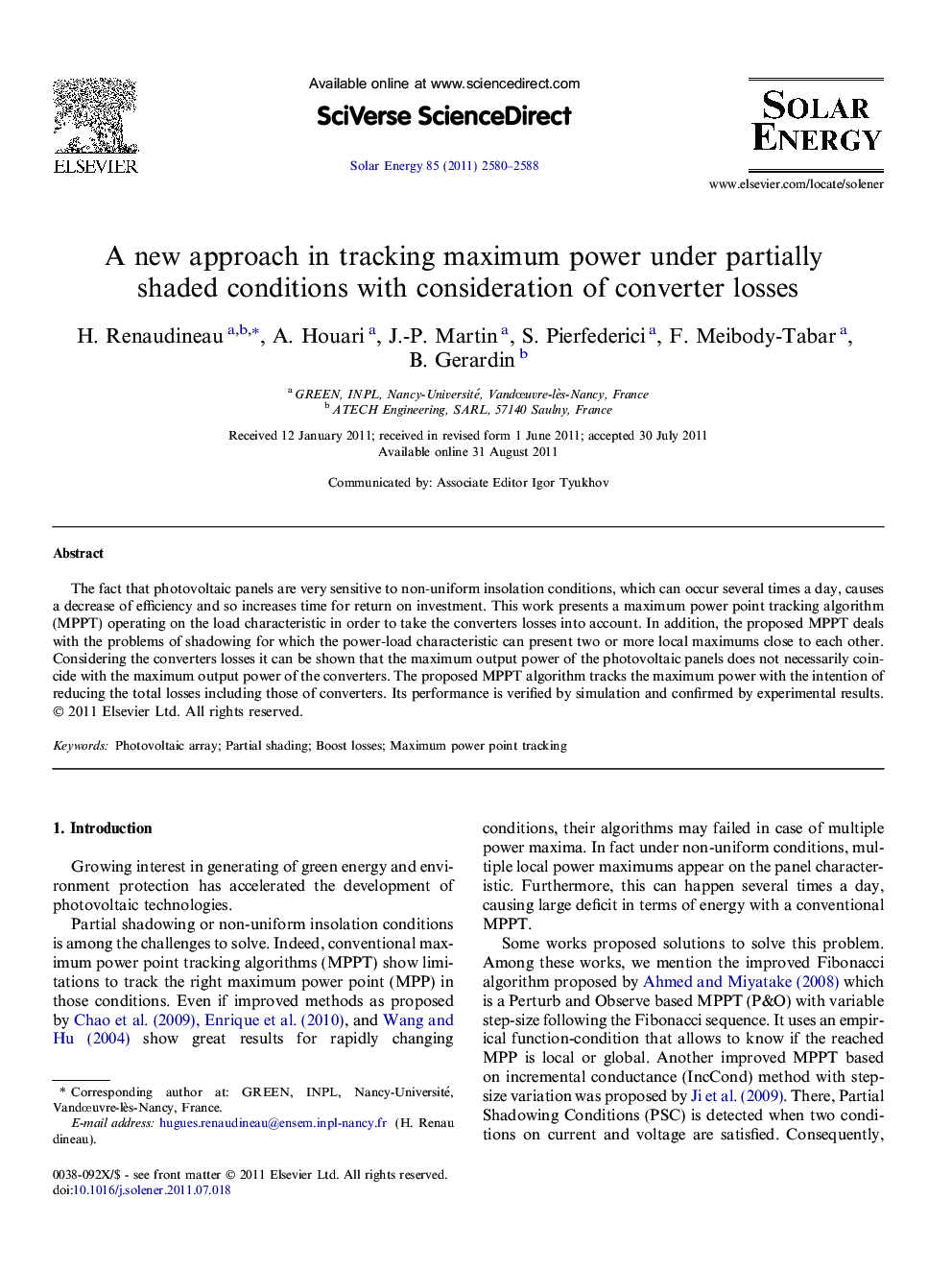| Article ID | Journal | Published Year | Pages | File Type |
|---|---|---|---|---|
| 1551119 | Solar Energy | 2011 | 9 Pages |
The fact that photovoltaic panels are very sensitive to non-uniform insolation conditions, which can occur several times a day, causes a decrease of efficiency and so increases time for return on investment. This work presents a maximum power point tracking algorithm (MPPT) operating on the load characteristic in order to take the converters losses into account. In addition, the proposed MPPT deals with the problems of shadowing for which the power-load characteristic can present two or more local maximums close to each other. Considering the converters losses it can be shown that the maximum output power of the photovoltaic panels does not necessarily coincide with the maximum output power of the converters. The proposed MPPT algorithm tracks the maximum power with the intention of reducing the total losses including those of converters. Its performance is verified by simulation and confirmed by experimental results.
► Photovoltaic panels modeling under partial shading conditions. ► Maximum power point tracking algorithm dealing with shadowing phenomenon. ► Global efficiency increased by considering converter losses into the MPPT. ► Losses reduction through the converter with the proposed algorithm. ► Performances verified for different PV panels’ interconnection schemes.
